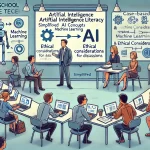
How to Apply LLM Models in Bioinformatics Research: A Comprehensive Guide for 2025
July 30, 2025Large Language Models (LLMs) are revolutionizing bioinformatics by enabling researchers to process vast biological datasets, predict molecular structures, and extract insights from scientific literature with unprecedented efficiency. These AI-driven tools, originally developed for natural language processing, are now tailored to interpret biological “languages” like DNA, RNA, and protein sequences. This blog post provides a detailed guide on how to apply LLM models in bioinformatics research, covering practical applications, tools, workflows, and best practices to maximize impact. Optimized for SEO, this comprehensive resource will help you harness LLMs to accelerate discoveries in genomics, proteomics, drug discovery, and beyond.
Why LLMs Are Transformative for Bioinformatics
LLMs, built on transformer architectures, excel at identifying patterns in sequential data, making them ideal for bioinformatics tasks. They can process complex datasets—such as genomic sequences or scientific texts—and generate actionable insights. Key advantages include:
Scalability: Handle massive datasets, from millions of DNA sequences to thousands of research papers.
Accessibility: Natural language interfaces allow non-computational researchers to perform advanced analyses.
Versatility: Support diverse tasks, including sequence analysis, protein structure prediction, and literature mining.
By integrating LLMs into bioinformatics workflows, researchers can streamline processes, reduce manual effort, and uncover novel insights in areas like personalized medicine and drug development.
Key Applications of LLMs in Bioinformatics
1. Genomics and Sequence Analysis
LLMs process DNA, RNA, and protein sequences to predict functions, annotate genes, and identify variants. For example, they can map DNA sequences to genomic locations or predict the impact of single nucleotide polymorphisms (SNPs).
How to Apply:
Use tools like GeneGPT to query NCBI databases via APIs for precise genomics data retrieval. For instance, input a gene sequence to retrieve functional annotations or align it across species.
Train or fine-tune LLMs on genomic datasets (e.g., FASTA files) to predict regulatory elements or non-coding RNA functions.
Example Workflow: Input a DNA sequence into GeneGPT, retrieve annotations, and use the model’s chain-of-thought reasoning to answer multi-hop questions like “What is the functional impact of this mutation?”
Tool: GeneGPT
2. Proteomics and Protein Structure Prediction
LLMs like ESMFold predict protein structures from amino acid sequences, enabling rapid identification of functional domains and drug targets.
How to Apply:
Use ESMFold to input protein sequences and generate 3D structure predictions. Compare results with experimental data from PDB (Protein Data Bank).
Fine-tune models on specific protein families to improve prediction accuracy for niche applications, such as enzyme design.
Example Workflow: Submit a protein sequence to ESMFold, obtain a predicted structure, and use visualization tools like PyMOL to analyze binding sites for drug design.
Tool: ESMFold
3. Antibody Design and Therapeutic Development
Specialized LLMs like IgLM model immunoglobulin sequences to design synthetic antibodies for therapeutic applications.
How to Apply:
Use IgLM to generate antibody sequences with desired properties (e.g., high affinity for a target antigen).
Validate generated sequences using molecular dynamics simulations or experimental assays.
Example Workflow: Input a target antigen sequence into IgLM, generate candidate antibodies, and test their binding affinity in silico before experimental validation.
Tool: IgLM
4. Literature Mining and Knowledge Extraction
LLMs extract insights from vast scientific literature, identifying gene networks, protein interactions, or drug-disease associations.
How to Apply:
Use tools like Perplexity.AI, SciSpace, or Consensus.app to query biomedical literature. For example, ask, “What are the latest findings on BRCA1 mutations in breast cancer?”
Integrate LLMs with knowledge graphs (e.g., via BioChatter) to map relationships between genes, proteins, and diseases.
Example Workflow: Query SciSpace with a research question, retrieve summarized papers, and use BioChatter to build a knowledge graph linking genes to pathways.
Tools: Perplexity.AI, SciSpace, Consensus.app, BioChatter
5. Single-Cell RNA Sequencing Analysis
LLMs analyze single-cell RNA sequencing (scRNA-seq) data to annotate cell types, infer cellular interactions, and identify differentially expressed genes.
How to Apply:
Use DrBioRight 2.0 to process scRNA-seq data and generate visualizations of cell clusters via natural language queries.
Fine-tune LLMs on scRNA-seq datasets to improve cell-type classification accuracy.
Example Workflow: Upload scRNA-seq data to DrBioRight, query “Identify cell types in this dataset,” and visualize results to explore cellular heterogeneity.
Tool: DrBioRight 2.0
6. Code Generation and Workflow Automation
LLMs like Chatlize.AI and RTutor.AI generate and debug bioinformatics scripts in Python or R, automating data analysis pipelines.
How to Apply:
Use RTutor.AI to generate R code for statistical analysis of gene expression data or Python scripts for sequence alignment.
Debug code by asking the model to identify errors and suggest fixes.
Example Workflow: Input a dataset into Chatlize.AI, request a Python script for differential gene expression analysis, and refine the code based on model feedback.
Tools: Chatlize.AI, RTutor.AI
Step-by-Step Guide to Applying LLMs in Bioinformatics
Step 1: Define Your Research Objective
Clearly outline your goal, e.g., “Predict protein structure for a novel enzyme” or “Extract gene-disease associations from literature.”
Identify the type of data (sequences, literature, omics data) and task (prediction, annotation, summarization).
Step 2: Select the Right LLM Tool
Choose a tool based on your task:
Genomics: GeneGPT, BioChatter
Proteomics: ESMFold, DrBioRight 2.0
Antibody Design: IgLM
Literature Mining: Perplexity.AI, SciSpace, Consensus.app, Scite.AI, Unriddle
Code Generation: Chatlize.AI, RTutor.AI
Step 3: Prepare and Input Data
Format data appropriately (e.g., FASTA for sequences, CSV for omics data, PDFs for literature).
Use APIs or user interfaces to input data into the chosen tool. For example, upload a FASTA file to ESMFold or query Perplexity.AI with a research question.
Step 4: Fine-Tune or Customize (Optional)
For specialized tasks, fine-tune LLMs on domain-specific datasets (e.g., cancer proteomics data for DrBioRight).
Use frameworks like BioChatter to integrate LLMs with custom knowledge graphs or databases.
Step 5: Analyze and Validate Outputs
Review model outputs (e.g., predicted structures, literature summaries, generated code).
Validate results using experimental data, peer-reviewed sources, or tools like BLAST for sequence alignment or PyMOL for structure visualization.
Step 6: Integrate into Workflows
Combine LLM outputs with existing bioinformatics pipelines. For example, use ESMFold’s predicted structures in molecular docking software or GeneGPT’s annotations in variant effect predictors.
Automate repetitive tasks using scripts generated by Chatlize.AI or RTutor.AI.
Best Practices for Using LLMs in Bioinformatics
Craft Precise Prompts:
Use clear, specific queries to improve output relevance. For example, instead of “Analyze this sequence,” ask, “Predict the secondary structure of this protein sequence.”
Leverage retrieval-augmented generation (RAG) in tools like BioChatter for context-aware responses.
Validate Outputs:
LLMs may produce “hallucinations” or errors, especially in quantitative tasks. Cross-check results with primary data, experimental assays, or established tools like BLAST or UniProt.
Integrate with Databases:
Use tools like GeneGPT or BioChatter to connect LLMs with databases (e.g., NCBI, UniProt) for accurate, up-to-date information.
Leverage Open-Source Tools:
Platforms like BioChatter and GeneGPT are open-source, allowing customization for specific research needs.
Address Ethical Considerations:
Be aware of biases in training data, especially for clinical applications. Ensure models are validated across diverse populations to avoid skewed predictions.
Optimize Computational Resources:
For resource-intensive tasks (e.g., ESMFold’s structure prediction), use cloud-based platforms or high-performance computing clusters to manage costs.
Challenges and Limitations
Accuracy: LLMs may generate plausible but incorrect outputs, particularly for complex tasks like SNP effect prediction or quantitative analysis.
Data Requirements: High-quality, annotated datasets are essential for fine-tuning and achieving reliable results.
Interpretability: Some LLM outputs (e.g., black-box predictions) may lack transparency, requiring additional validation.
Computational Costs: Tools like ESMFold require significant computational power, which may be a barrier for smaller labs.
Future Directions for LLMs in Bioinformatics
Improved Accuracy: Advances in model training and validation will reduce errors and enhance reliability for clinical applications.
Integration with Multi-Omics: LLMs will increasingly integrate genomics, proteomics, and metabolomics data for holistic analyses.
Accessibility: Cloud-based solutions and open-source frameworks will make LLMs more accessible to researchers with limited resources.
Ethical AI: Efforts to address biases and improve generalizability will ensure equitable outcomes in personalized medicine.
Conclusion
Applying LLMs in bioinformatics research unlocks new possibilities for analyzing biological data, designing therapeutics, and mining scientific literature. By leveraging tools like DrBioRight 2.0, GeneGPT, ESMFold, IgLM, BioChatter, and literature-focused platforms like Perplexity.AI, SciSpace, Consensus.app, Scite.AI, and Unriddle, researchers can streamline workflows and accelerate discoveries. Follow the step-by-step guide, adopt best practices, and validate outputs to maximize the potential of LLMs in your research.
For additional resources, explore Bioinformatics.org or EBI’s training portal for tutorials and datasets. Stay ahead in 2025 by integrating these powerful AI tools into your bioinformatics workflows.


















